It took a few sessions to reach it, but the last dozen laps of this test ride felt like a tipping point. A moment in superbike evolution.
The bike, of course, was this, the 2023 S 1000 RR featuring more advanced electronics as well as the steering geometry, adjustable swingarm pivot, and ride height adjustment of the M-Sport, plus a handful of more top-end horsepower from the ShiftCam engine along with a pair of distinctive aero wings. The racetrack was Almeria in southern Spain, a circuit I know well but had never lapped quite like this.
Editor’s note: We reviewed previous S 1000 RRs during the 2020 BMW S 1000 RR First Ride Review, 2020 BMW S 1000 RR MC Commute Review, 2021 BMW S 1000 RR MC Commute Review and 2022 BMW S 1000 RR Review at Double R Fest articles and videos.
And that moment? Ah yes, well after an intense day of building confidence and speed on our slick-shod RR, of braking harder and later, of turning quicker, leaning further, and getting back on the gas a nanosecond sooner, I truly understood the capabilities of S 1000 RR and its incredible armory of electronic rider aids. The new S 1000 RR is now so easy to ride at pace that once you trust in the tech and commit to it, the world is a different place. It feels uncrashable (it isn’t) and as much like a video game as a white-knuckling 205 hp superbike. It is digitized brilliance that allows the throttle and brakes to be applied almost like switches, fully on or fully off, with seeming impunity. Even when the tire grip starts to fall away, the Beemer will do the thinking and worrying. You, the rider, just keep the thing nailed.
Admittedly there were those pre-warmed Bridgestone slicks and a pair of optional M-Sport carbon rims that added even more zip and ping to the RR’s handling, but the possibilities for even the standard S 1000 RR now appear limitless as it pulls its rider into areas only pro racers once knew. The frayed senses, the mental and physical exhaustion of digging out more lap time, of riding on your limit, almost evaporate on this motorcycle.
We’ve been headed this way for a while; ever since electronic rider aids began to appear on production bikes in the early 21st century in fact. Today, a Ducati Panigale V4 or Honda Fireblade—any of the current crop of track-focused superbikes—can elevate their riders to a level and lap time barely imaginable a few years ago, but the RR is another small step.
There is no silver bullet as to why. The engine is only tweaked for 2023. The 999cc ShiftCam inline-four, with variable valve timing and lift thanks to BMW’s unique setup that slides the camshaft back and forth to engage different lobes depending on the revs, has revised intake ports for 2023, while the airbox is new with shorter, variable height intake funnels. There are a couple more horsepower up top and BMW has added an extra tooth to the rear sprocket, taking it to 46 teeth and lowering the final drive ratio.
Some might be disappointed that it remains down on peak output compared to the Panigale and Aprilia RSV4 but the S 1000 RR didn’t need any more horses. It’s powerful enough, thank you. Its strength is its astounding versatility.
The ShiftCam is able to pull from 30 mph in sixth gear to an indicated 280 kph/174 mph without once feeling like it’s struggling. On the Almeria circuit’s long back straightaway it was still pulling hard as the speedo nudged toward 285 kph/177 mph and I felt it wise to go for the awesome brakes.
Ridiculous speed comes so easily because, with ShiftCam, you don’t need to be inhabiting the last 20 percent of the rev range to make things happen. Instead, it drives urgently and cleanly through its midrange—jumping off turns without feeling frantic—and you can even afford to short-shift to give the electronic rider aids an easier time. Above 9,000 rpm the camshafts engage with higher lift and longer duration lobes and it revs, seemingly friction-free, to its 14,500 rpm redline. And it loves doing that too!
The fueling is among the best I’ve ever experienced on a 1,000cc sportbike. Smooth and glitch-free, it allows you to be ultraprecise with the throttle, getting on the power sooner and sooner. There’s no snatchiness or sharp edges, which gives the rear tire an easier life and allows you to accelerate progressively, feeling the grip in the rear slick build exponentially. It’s brutally quick but somehow doesn’t feel it. Instead, it seems to flow around the track like mercury.
Chassis-wise the RR’s alloy Flex Frame chassis is made from four die-cast aluminum elements and utilizes the engine and gearbox as a structural member, and now has optimized flexibility and revised, more relaxed geometry. The steering head angle is 0.5 degree shallower at 23.6 degrees (instead of 23.1 degrees), while the steering offset is reduced by 3mm via new triple clamps. Trail increases from 3.7 inches to 3.9 inches and the wheelbase is 0.6 inch longer than before at 57.4 inches, almost the same as the current M 1000 RR.
The S 1000 RR also gets the M Chassis Kit as standard and features an adjustable swingarm pivot point, while the rear shock and 45mm USD fork is also revised. Electronic damping adjustment is an option (standard on the S 1000 RR Sport) with the DDC Dynamic Damping Control package matching the suspension settings to the selected riding mode.
The RR weighs in at 434 pounds fully fueled for the standard bike, at 430 pounds with the optional Race Package that adds forged alloy wheels instead of die-cast rims, and at 427 pounds with the M Package option that swaps them for lightweight carbon wheels. The new winglets, meanwhile, generate up to 38 pounds of downforce at 300 kph, or 186 mph, which is more than the 36 pounds claimed for the M 1000 RR wings.
The changes are not huge but are significant. Within a few laps you feel at home on the S 1000 RR; like a bike you’ve been riding at trackdays all season. You immediately click and understand how the new chassis translates to the rider.
The BMW isn’t a sharp, cutthroat sportbike or as its aggressive “winged” looks suggest. Instead, it’s on a mission to help you get the best out of yourself. The steering is a perfect balance between knife-edge sharp and sublime: Look where you want to be and you’re there… Just like you’re in your living room racing your gaming mates. Apexes are hit with perfect accuracy, knee over the curb paint, lap after lap, and with minimum effort. You don’t have to force it; everything input is met with a willing and natural response. You find yourself with more mental capacity; it almost seems slow.
Unlike a video game, however, you feel grip levels build as you push the slicks. Midcorner feedback is clear, and body position changes don’t appear to upset the chassis or grip. Get on the power early and, instead of drifting wide, the BMW continues to hold a line, driving hard and with certainty to the next braking zone.
No matter how much I provoked the RR by clipping curbs, even on the brakes, it remained unmoved and planted. With the large TFT dash reading 175 mph at the end of the straight, high-speed stability wasn’t in question either. The new, larger screen deflects most of the wind blast so you can get tucked in, relax, and release your grip from the bars, which remain unflappable.
The 2023 RR runs BMW-branded radial four-pot calipers on 320mm discs at the front, and a single-piston rear caliper gripping a 220mm rotor, with new electronic control systems and rider aids.
ABS Pro is essentially cornering ABS designed to work with slick tires. Combined with the new MSR engine-brake control and BSA Brake Slide Assist (optional Pro mode) it’s amazing what you can get away with, and almost takes the calculation of braking out of the rider’s hands.
The ABS Pro allows you to brake breathtakingly deep and late without fear of locking the front tire. BSA, which features a new steering head sensor, can calculate how much you are steering into a slide when braking heavily and the rear end starts to come around or “back in.” It took me most of the day before I could jump on the brakes (front and rear) and allow the system to bring the rear back in line with the front but when the system kicks in, it’s impressive.
In fact, all the while, working away in the background, is a package of superlative electronic rider aids. As well as ABS Pro and BSA Brake Slide Assist there is a new DTC Side Control, MSR engine-brake torque control system, and even an ABS Stoppie feature—with the functionality of many of these new features enhanced by the new steering angle sensor. BMW has even improved the Shift Assistant Pro quickshifter for 2023, making for smoother shifts.
The introduction of the Slide Control function allows the rider to preselect one of two possible drift angles that can be achieved before the Dynamic Traction Control system intervenes. The clever system uses the bike’s steering angle to work out how far out of line the rear wheel is. In principle, you can now truly power slide and steer from the rear. But you must first be able to get the rear spinning, which I guess is only relevant to a small percentage of riders. Although it’s nice to know it’s there when that slip does happen.
The usability of the RR’s chassis and motor, backed up by new and advanced rider aids, means that on track we mere mortals can now gain access to every horse in the stable as well as every ounce of grip and braking force. Nothing goes to waste.
The 2023 BMW S 1000 RR isn’t tremendously different to the already excellent 2022 machine but it feels as friendly as a 130 hp supersport 600. It’s so unintimidating you can just jump on and thrash it.
The changes to the chassis, even the addition of new aerodynamic wings, aren’t ground-breaking, but in tandem with the uprated electronics deliver a sportbike with immense feedback, stability, and huge stopping power, while the new electronic rider aids have upped the Beemer’s game to the point that the RR really does ride like a PlayStation game—albeit one with the ability to bite should you get it completely wrong. It’s simply stunning.
2023 BMW S 1000 RR Technical Specifications and Price
| PRICE | $TBD |
|---|---|
| ENGINE | 999cc, liquid-cooled inline 4-cylinder; 4 valves/cyl. |
| BORE x STROKE | 80.0 x 49.7mm |
| COMPRESSION RATIO | 13.3:1 |
| FUEL DELIVERY | Fuel injection |
| CLUTCH | Wet, multiplate slipper, self-reinforcing |
| TRANSMISSION/FINAL DRIVE | 6-speed/chain |
| FRAME | Aluminum, engine load bearing |
| FRONT SUSPENSION | 45mm upside-down fork, fully adjustable, optional electronic; 4.7 in. travel |
| REAR SUSPENSION | Single shock, fully adjustable, optional electronic; 4.6 in. travel |
| FRONT BRAKES | 4-piston Monoblock caliper, dual 320mm discs w/ ABS |
| REAR BRAKE | 1-piston caliper, 220mm disc w/ ABS |
| WHEELS, FRONT/REAR | Aluminum; 17 x 3.5 in. / 17 x 6 in. |
| TIRES, FRONT/REAR | Bridgestone Racing Battlax VO2 on test; 120/70-17 / 200/55-17 (with M-Wheels) 190/55-17 (std) |
| RAKE/TRAIL | 23.6°/4.0 in. |
| WHEELBASE | 57.3 in. |
| SEAT HEIGHT | 32.8 in. |
| FUEL CAPACITY | 4.4 gal. |
| CLAIMED CURB WEIGHT, FULLY FUELED | 434 lb. / 427 lb. (M Package) |
| WARRANTY | 3-year |
| CONTACT | bmwmotorcycles.com |
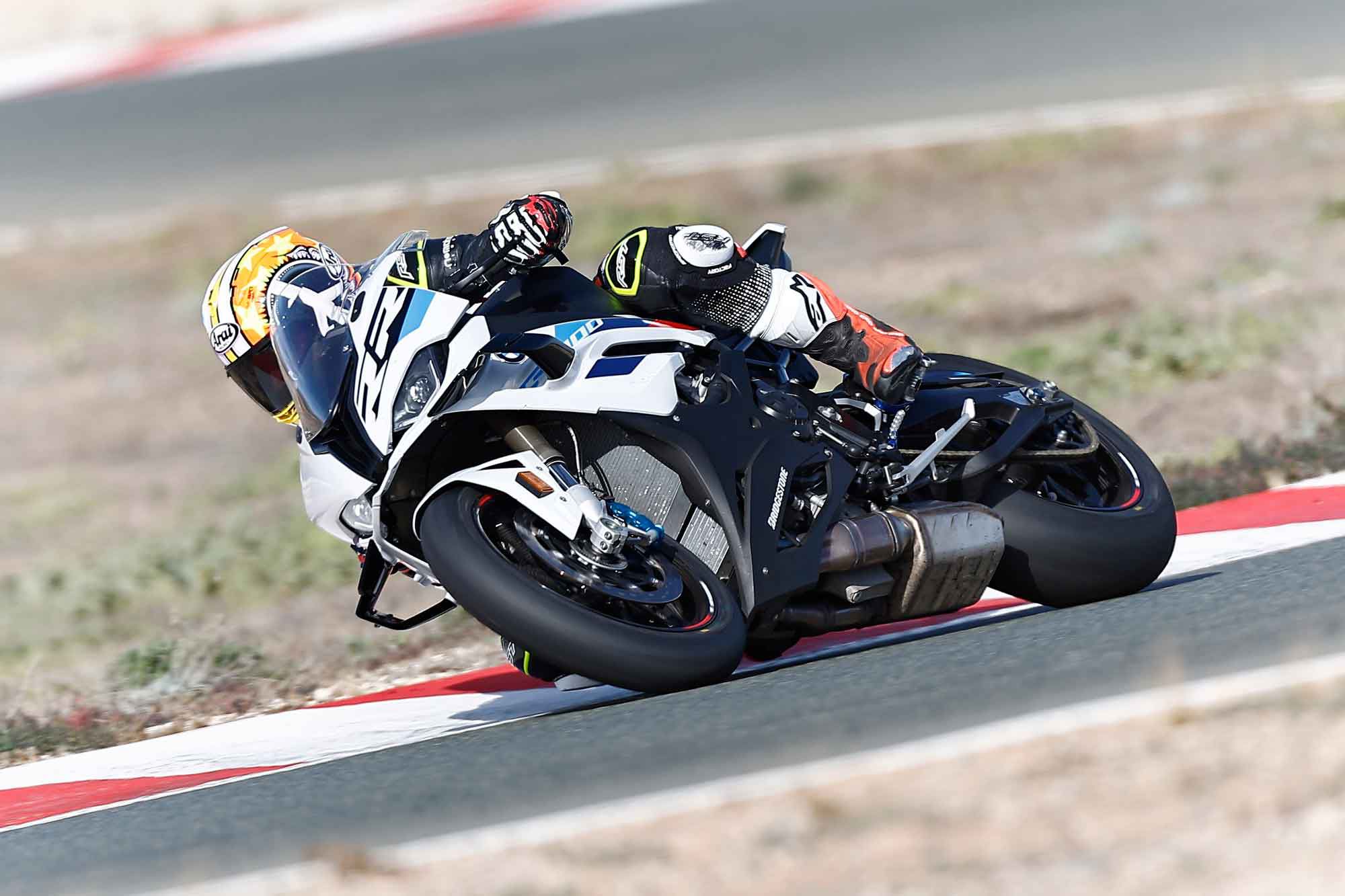
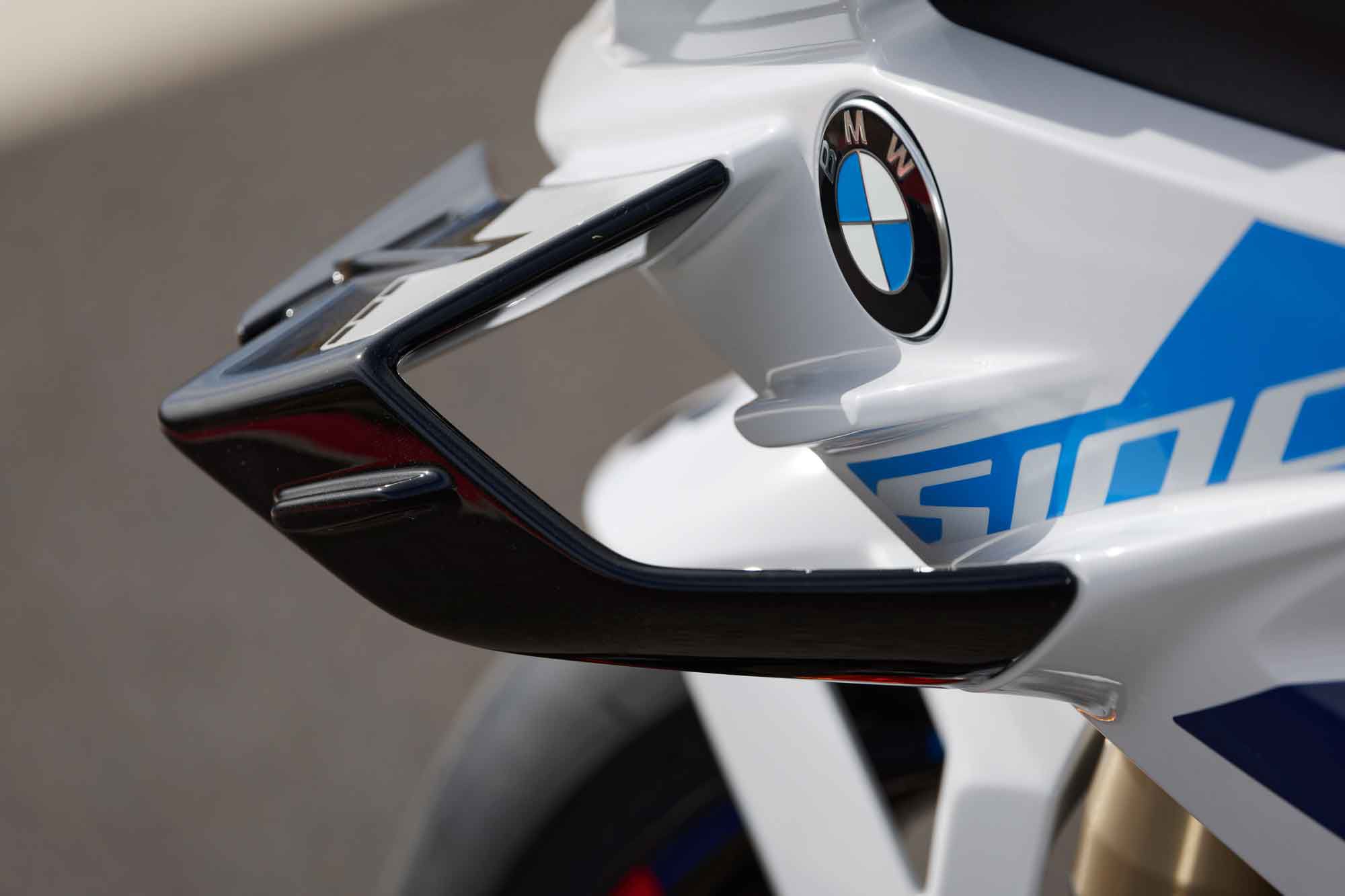
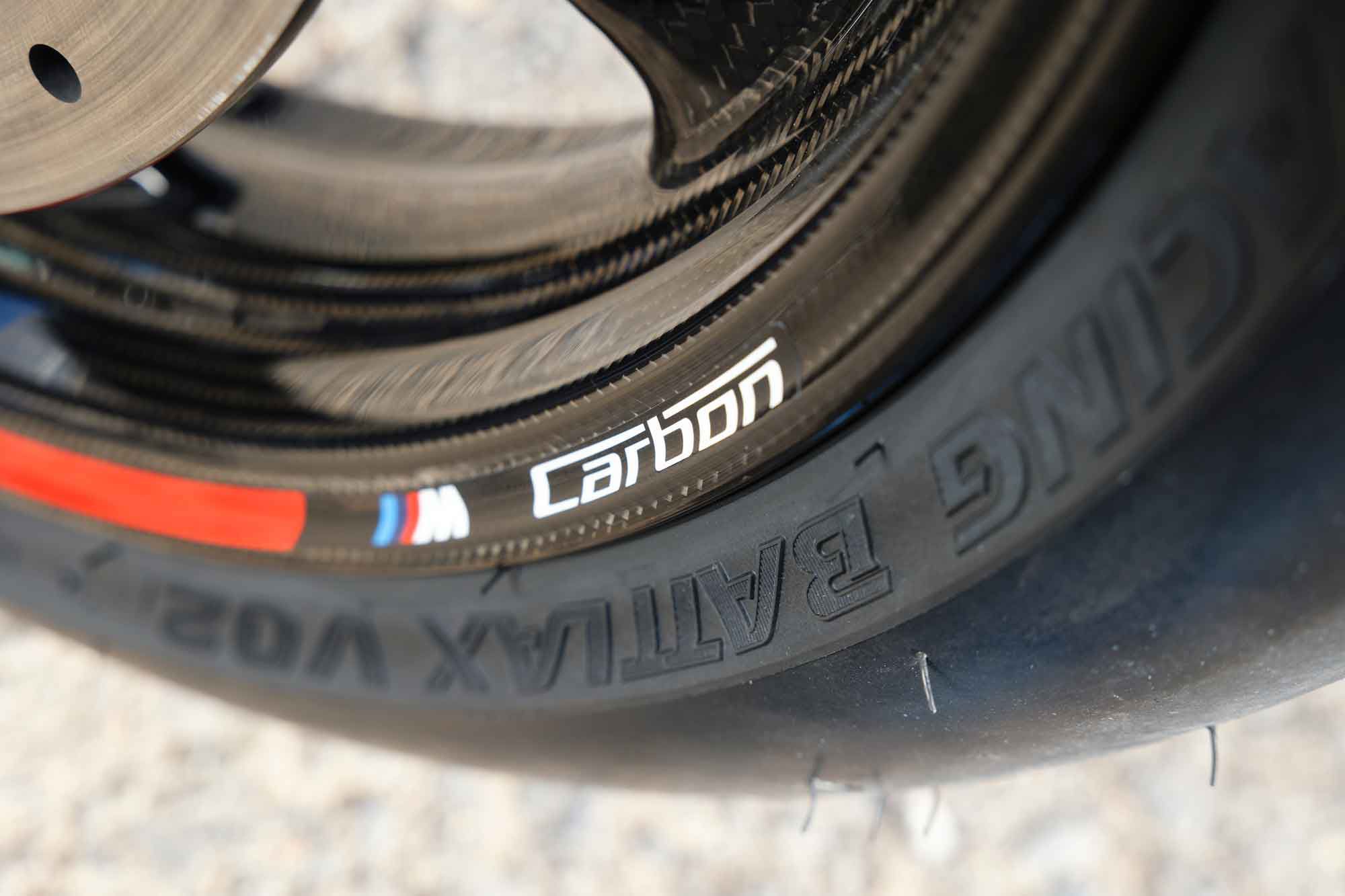
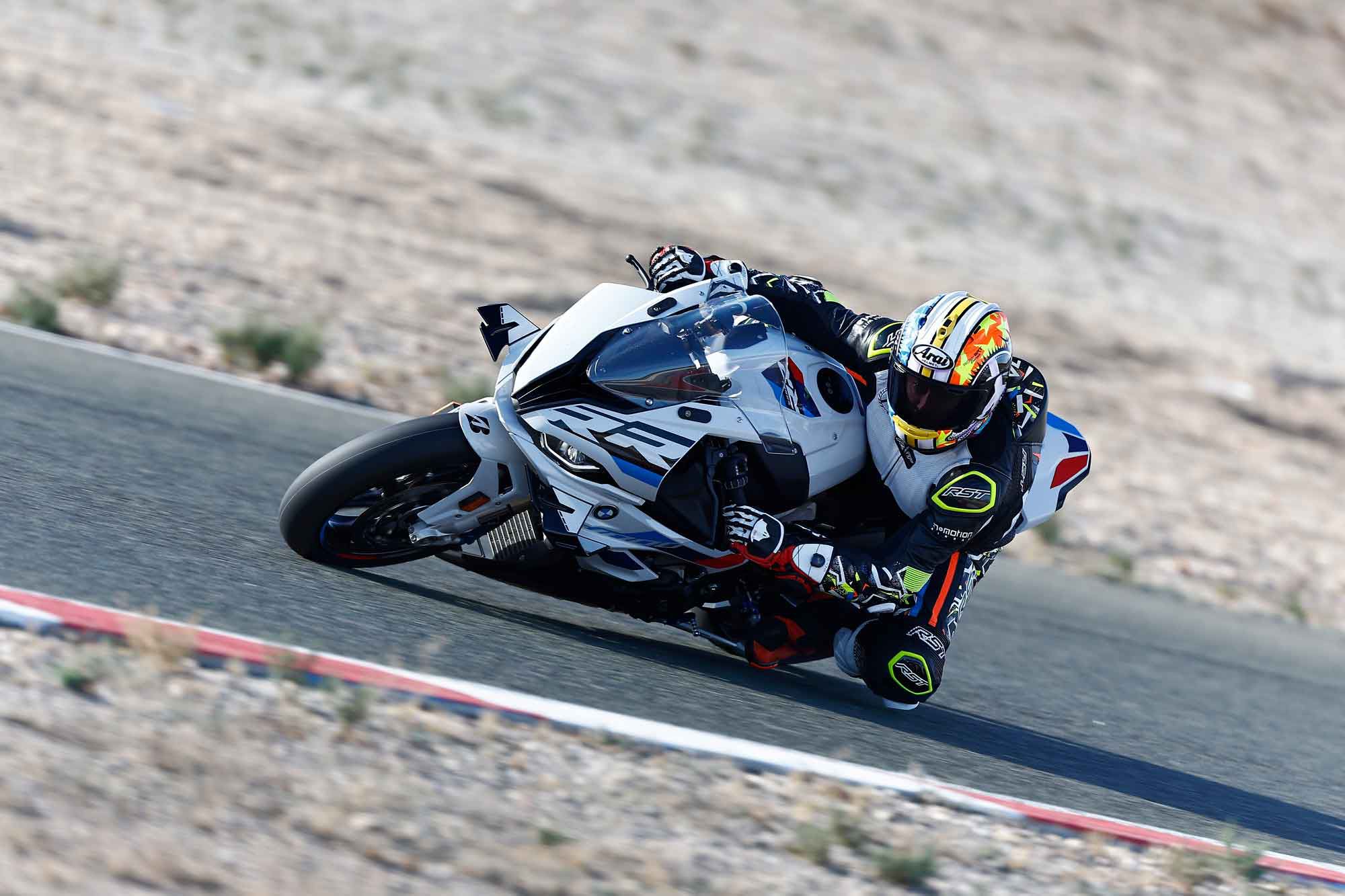
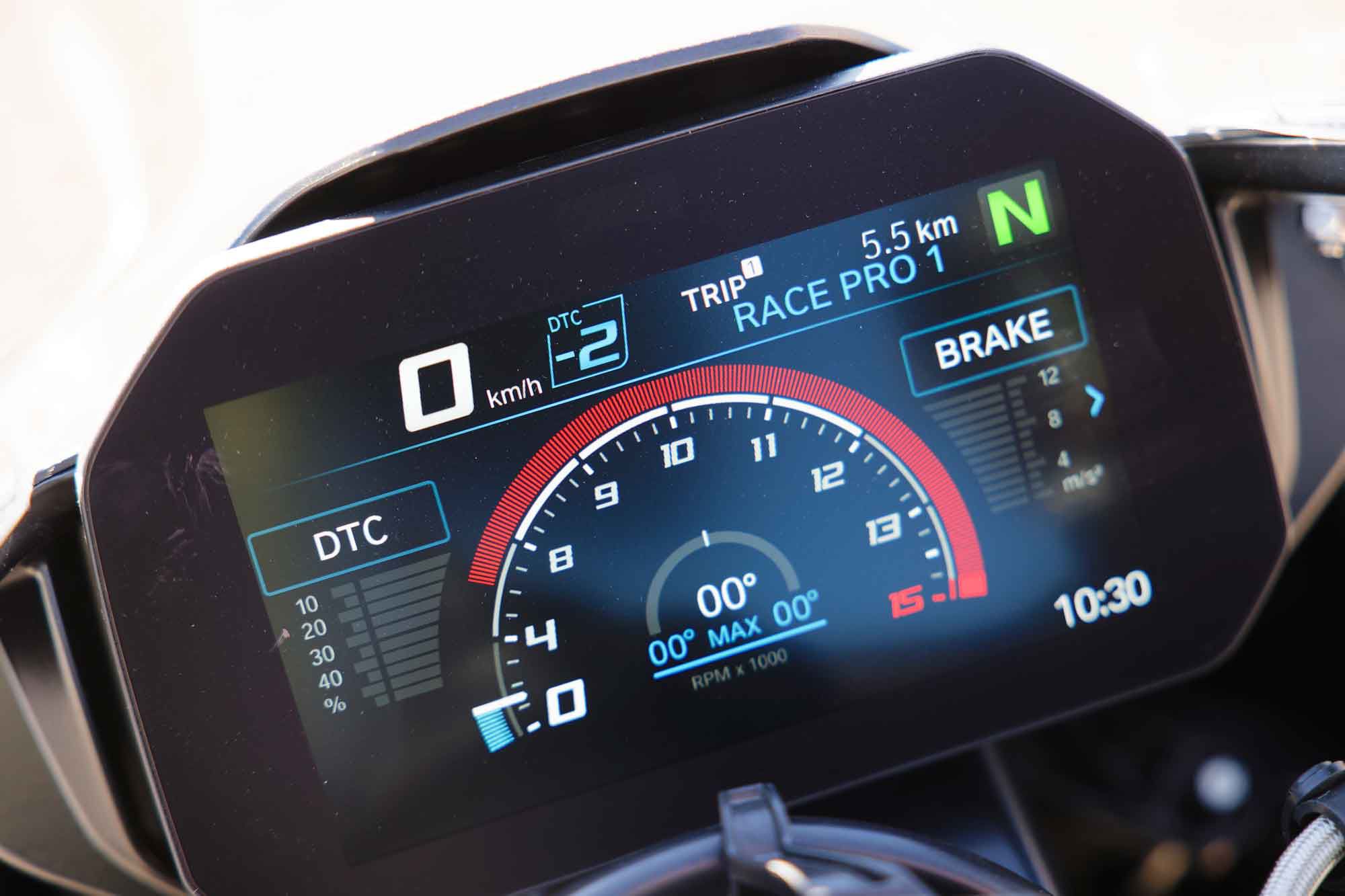
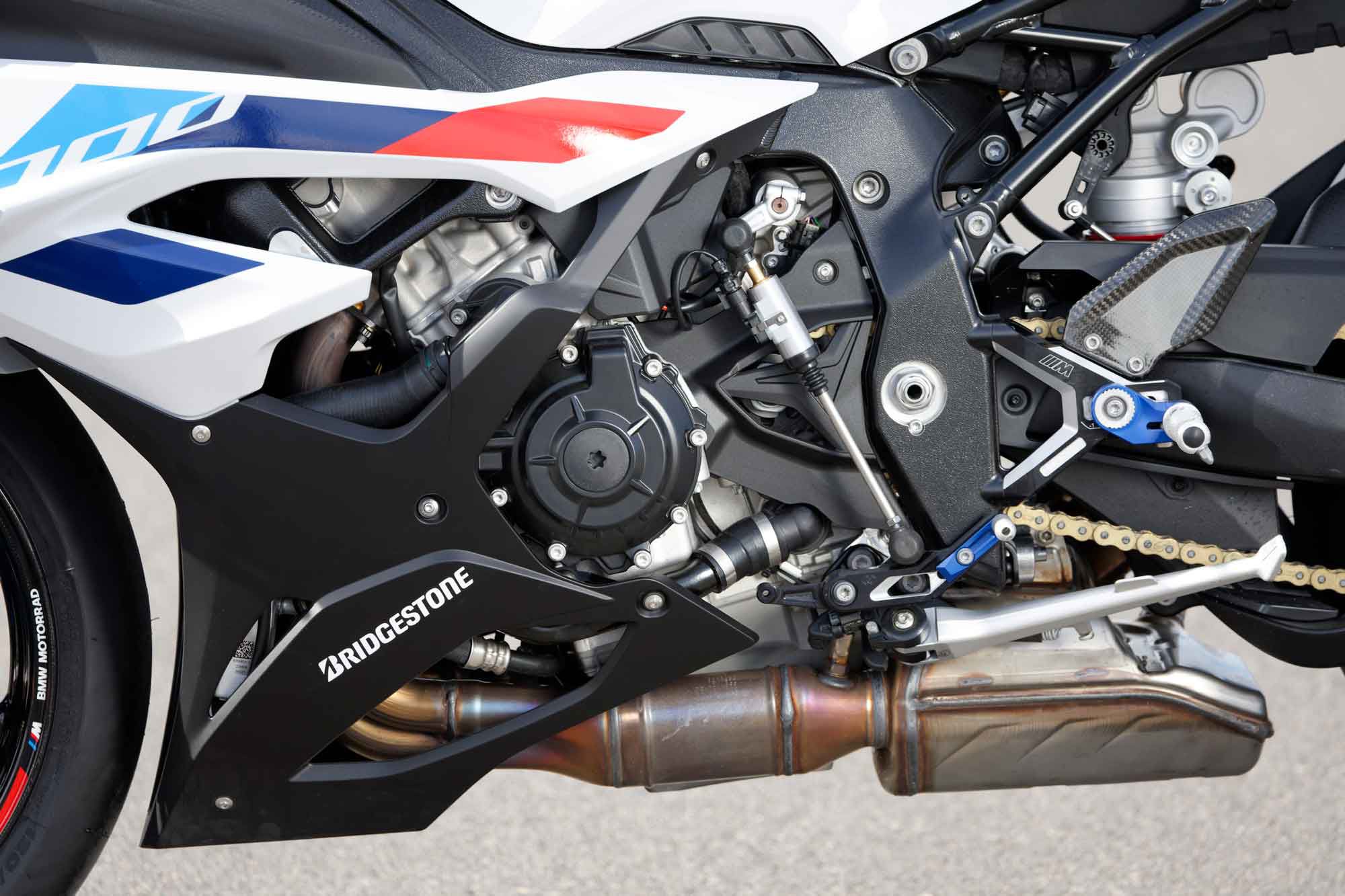
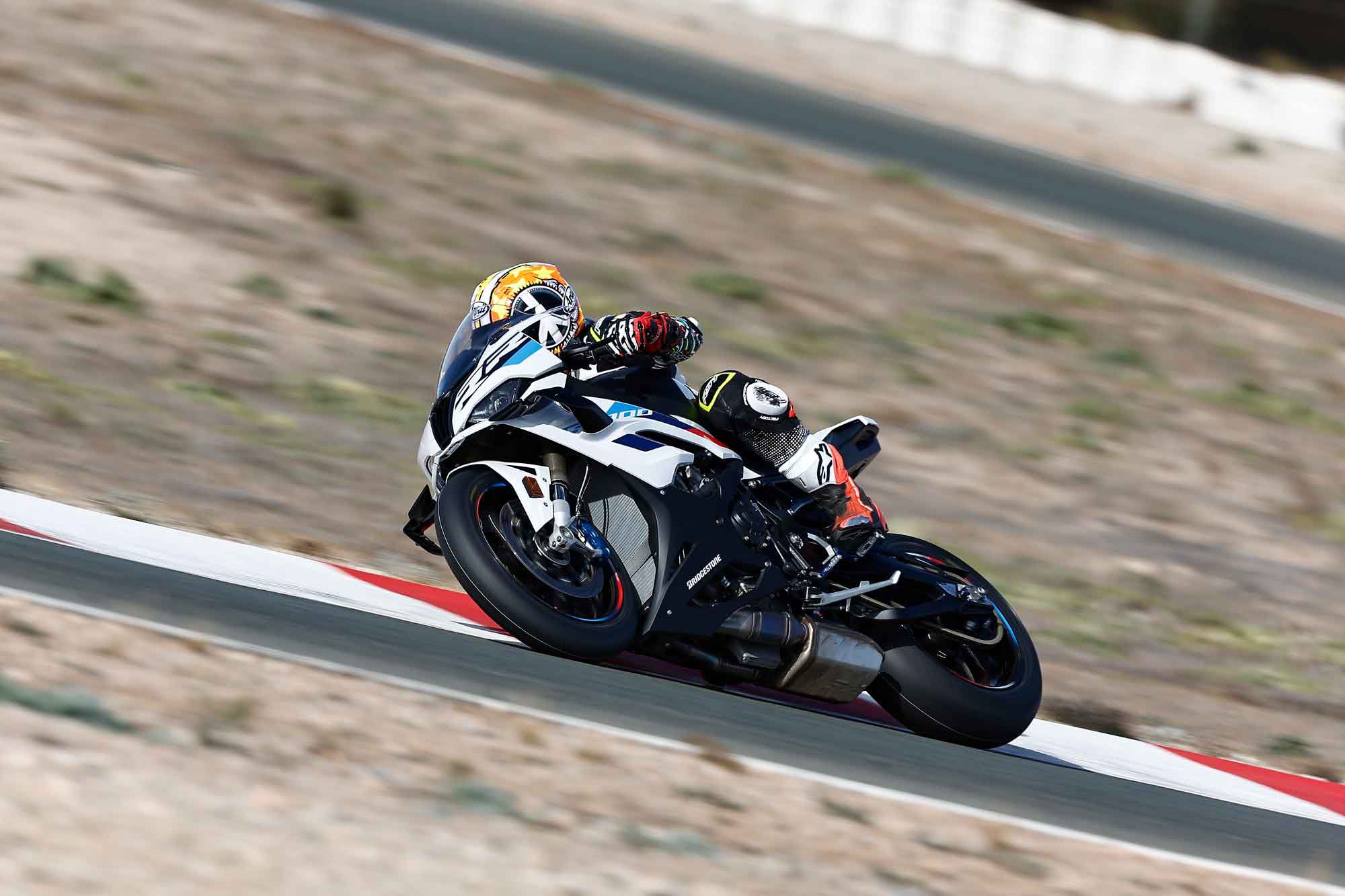
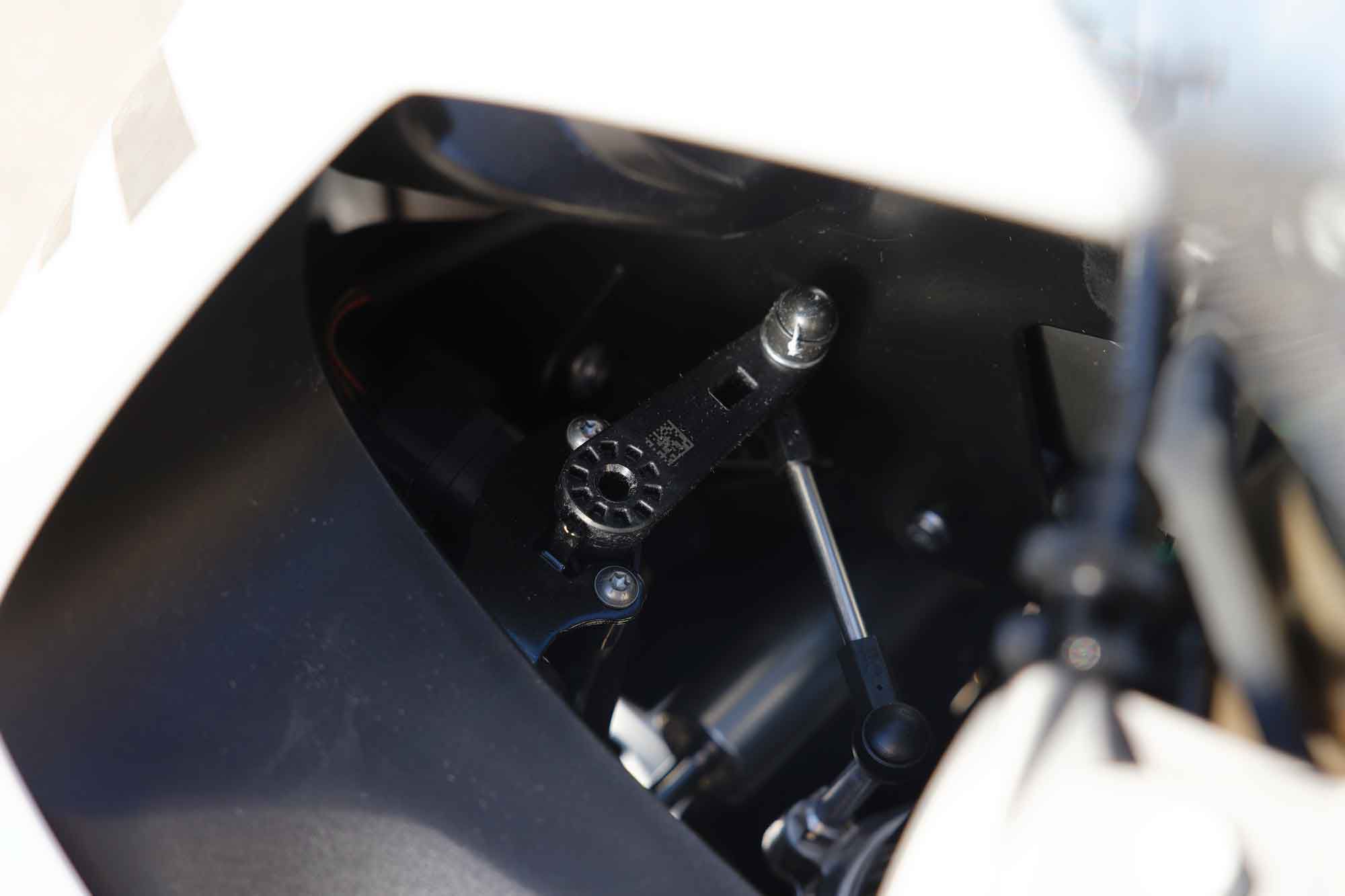
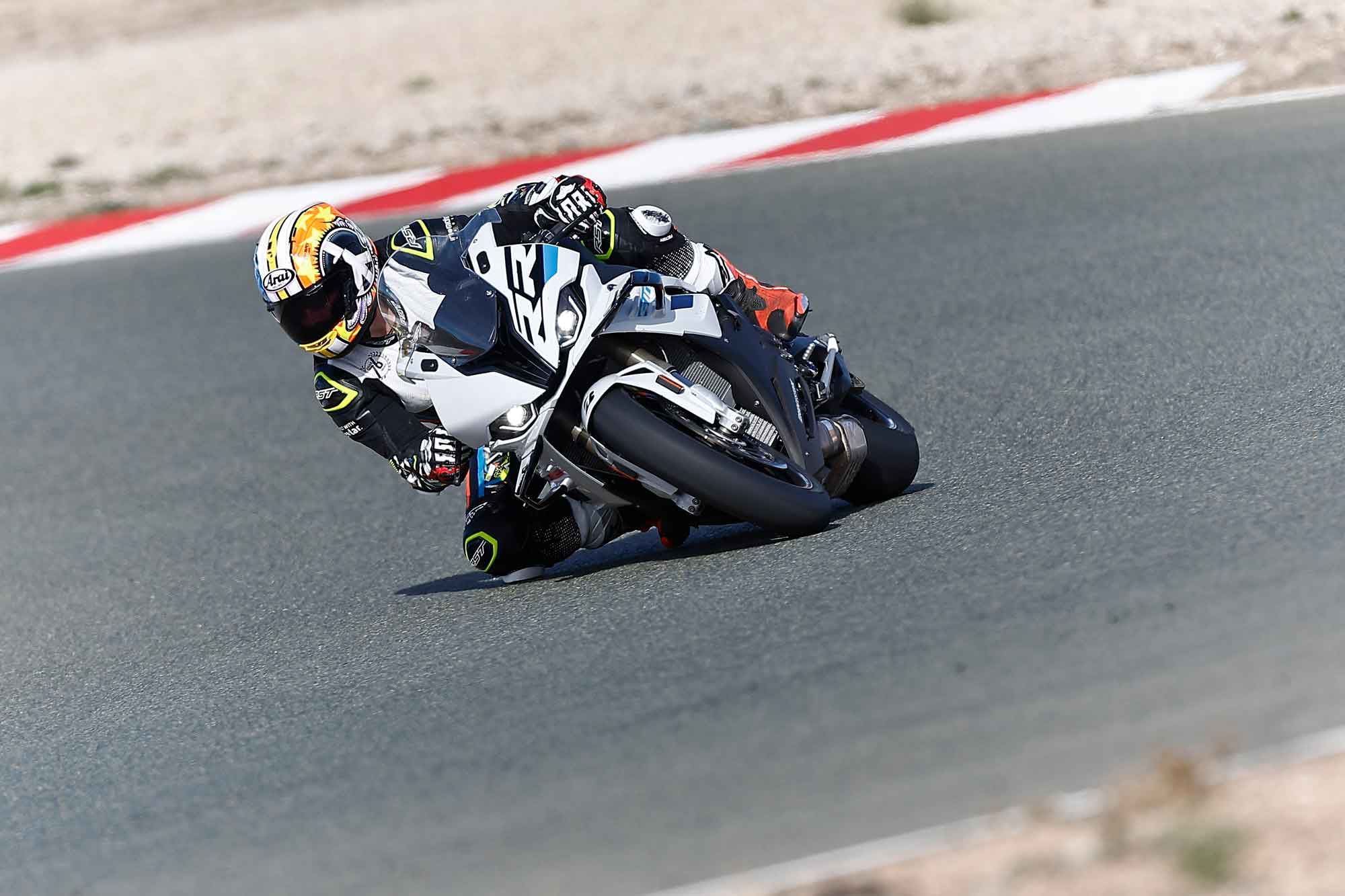
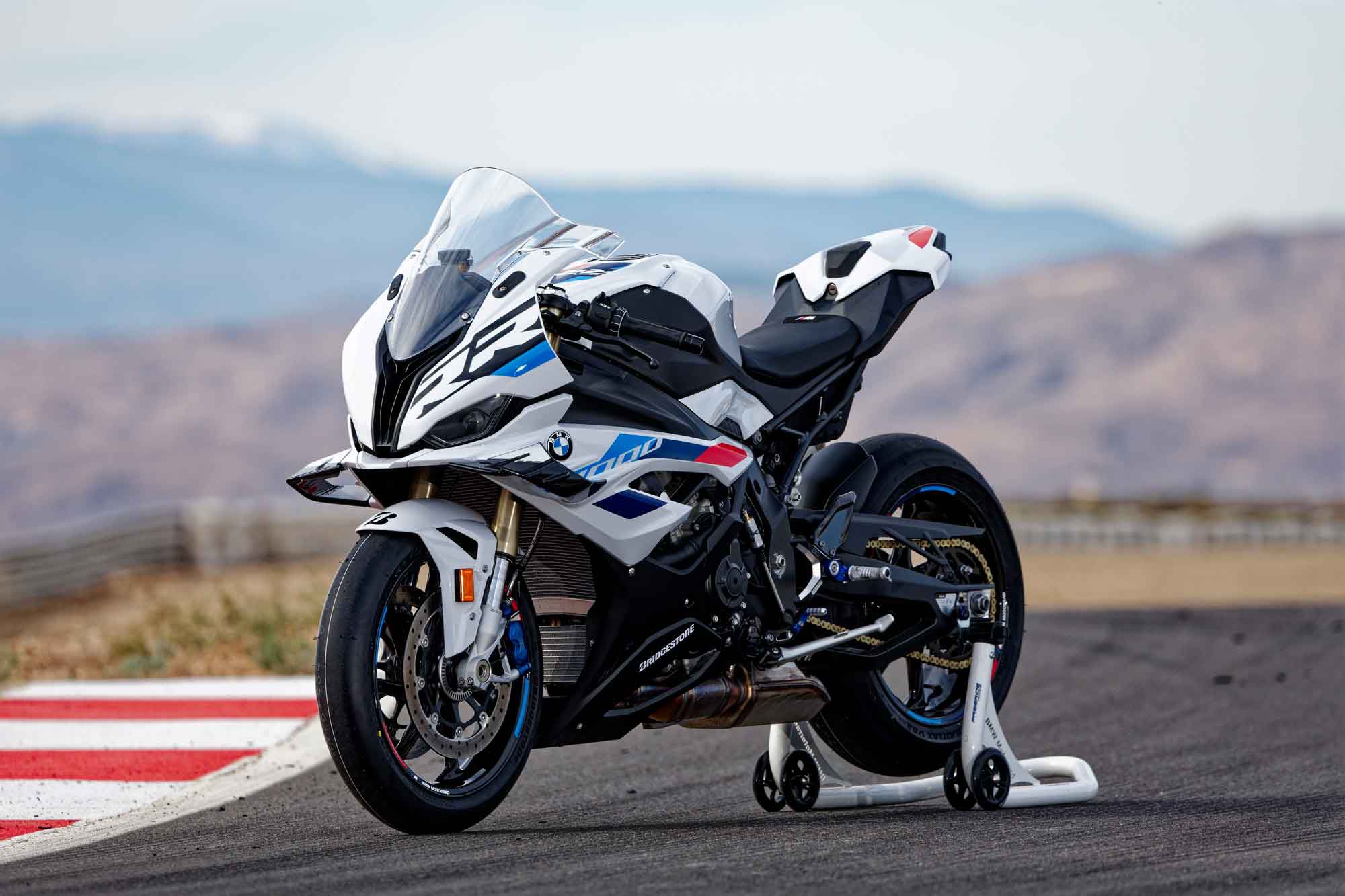
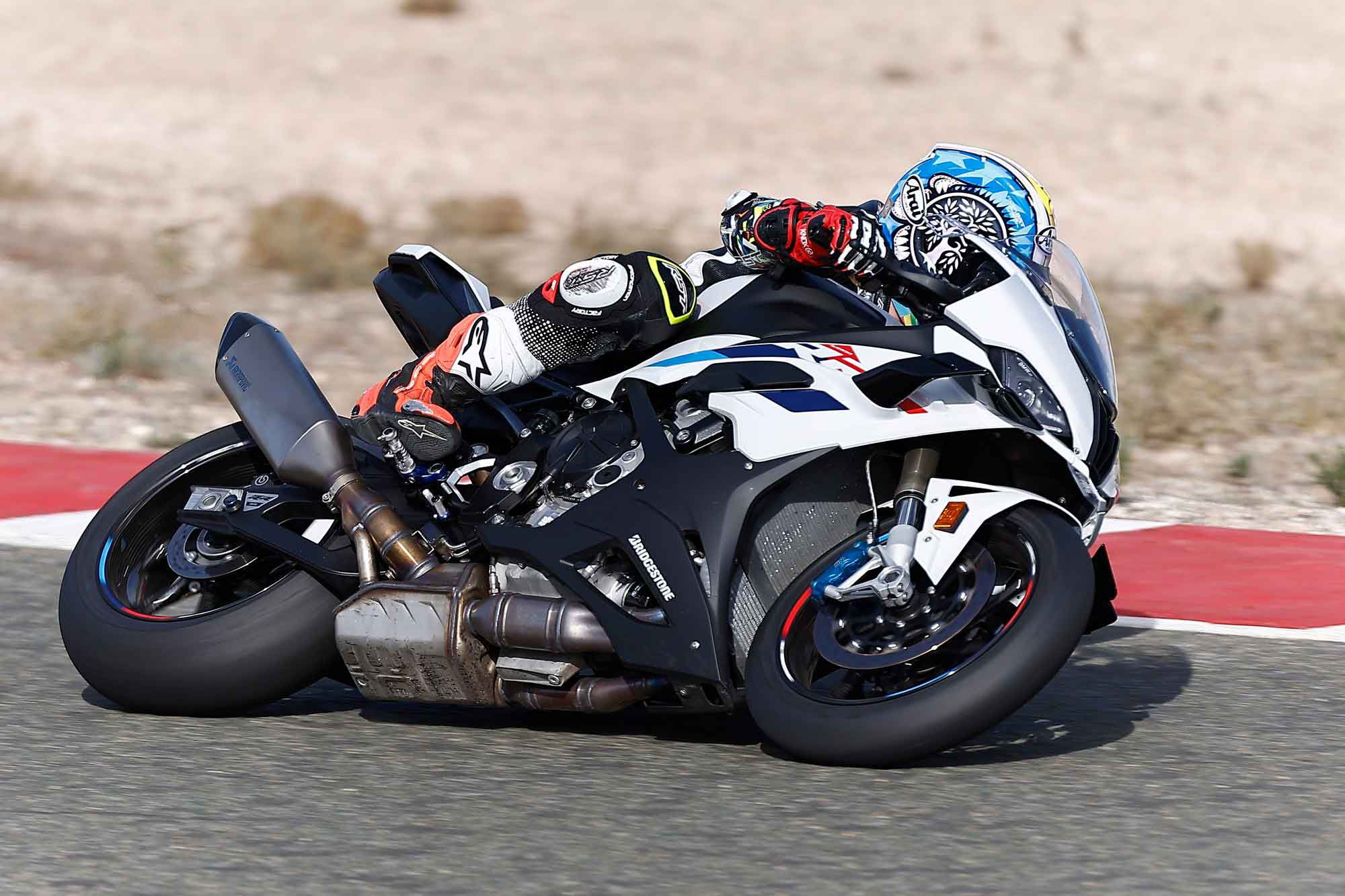
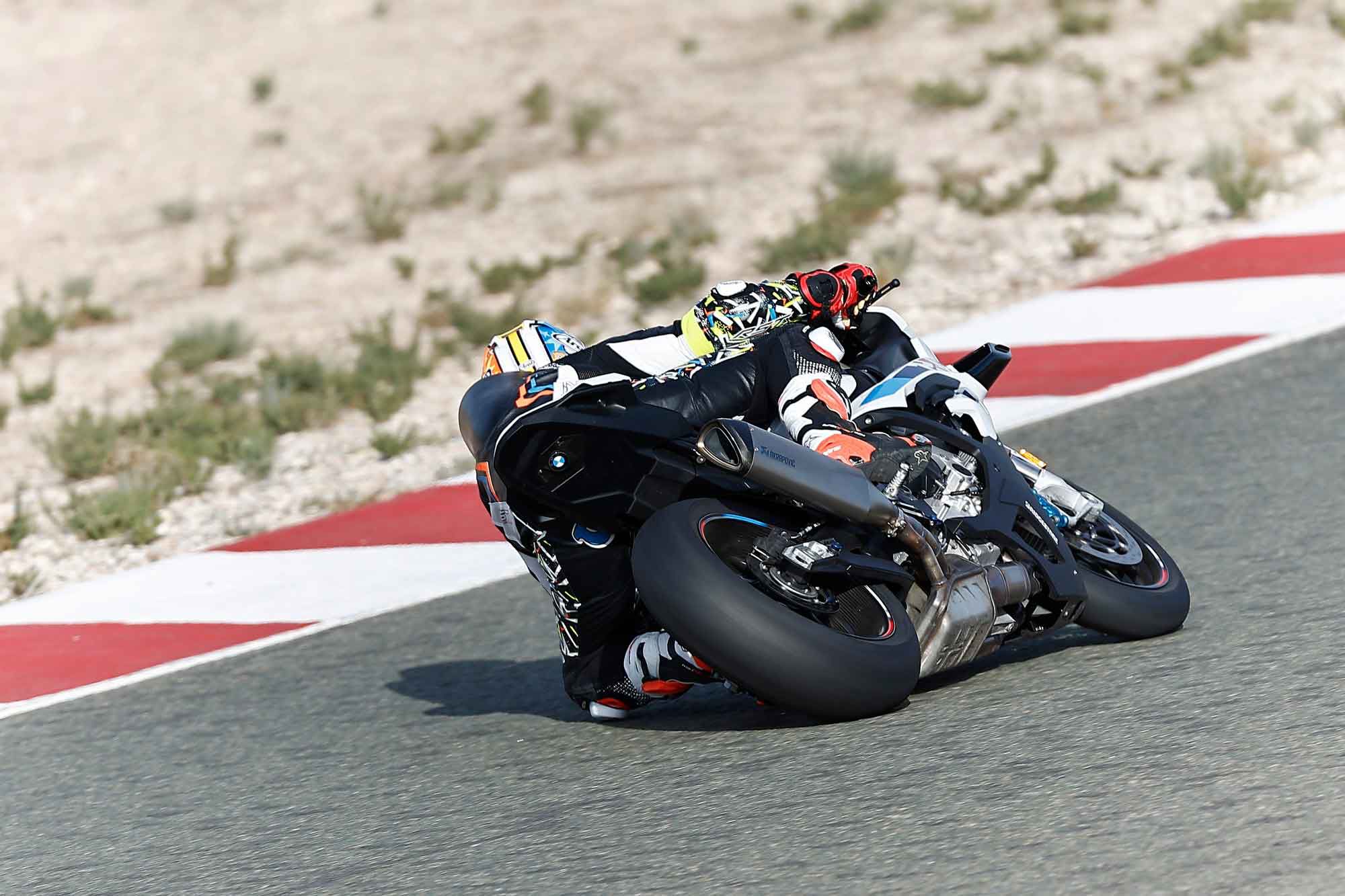
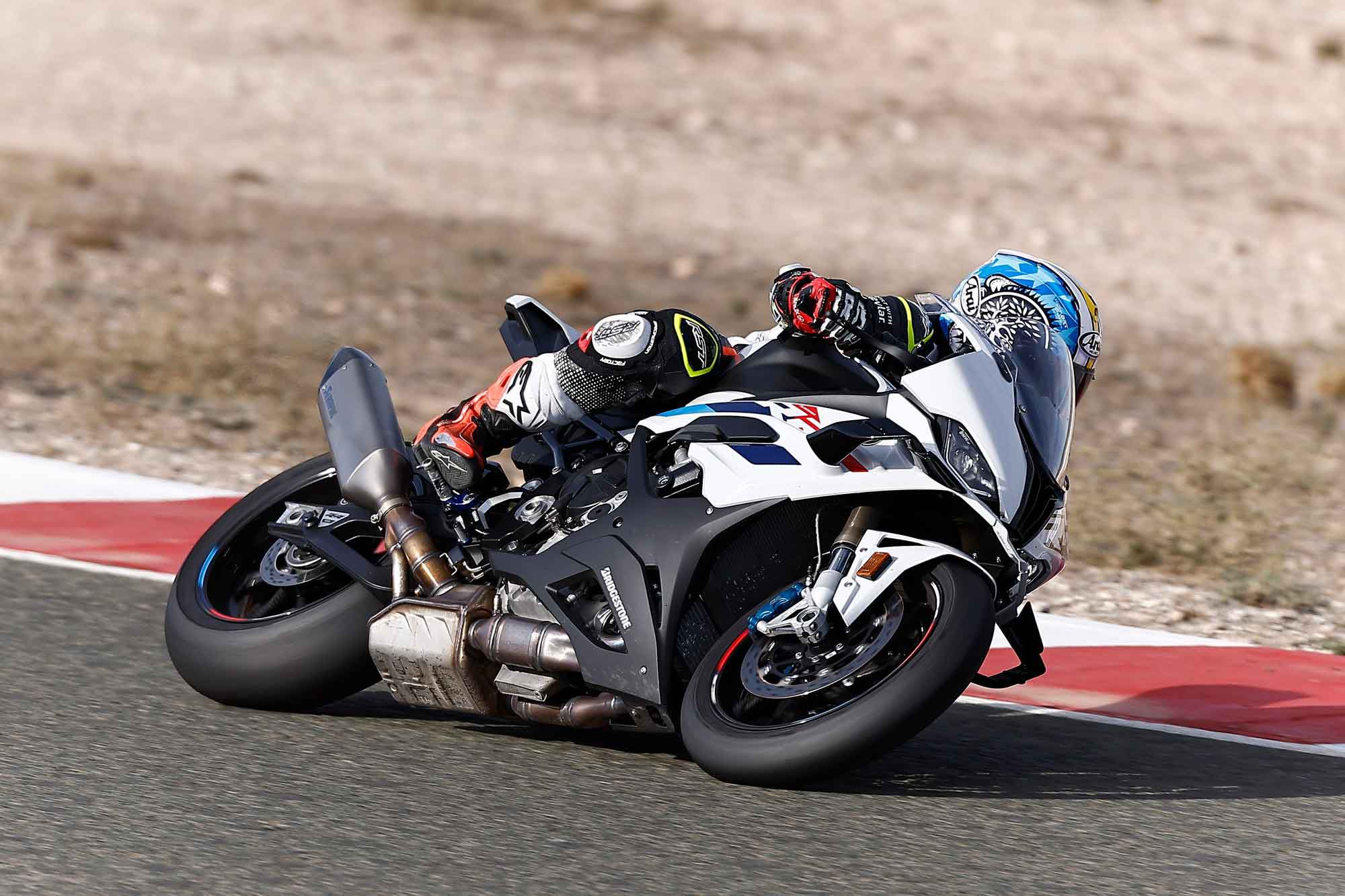
Source: MotorCyclistOnline.com
